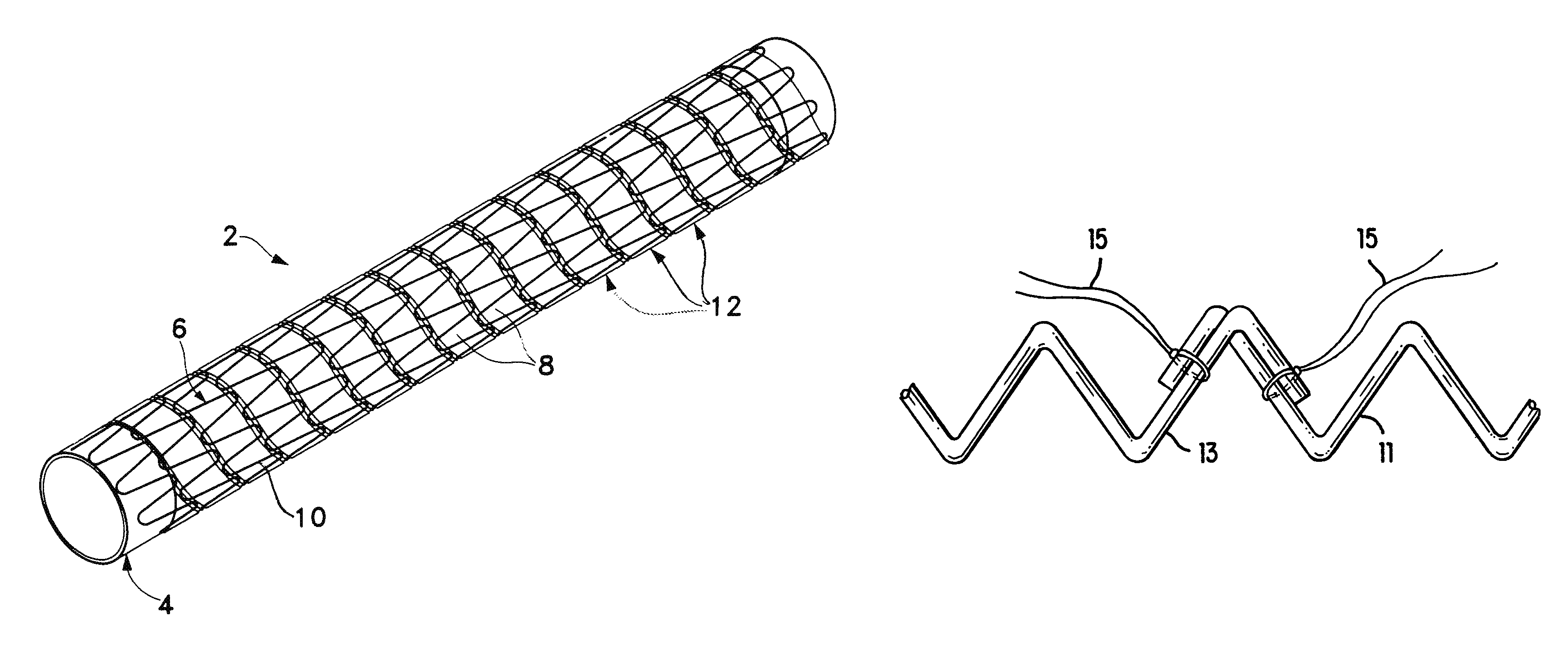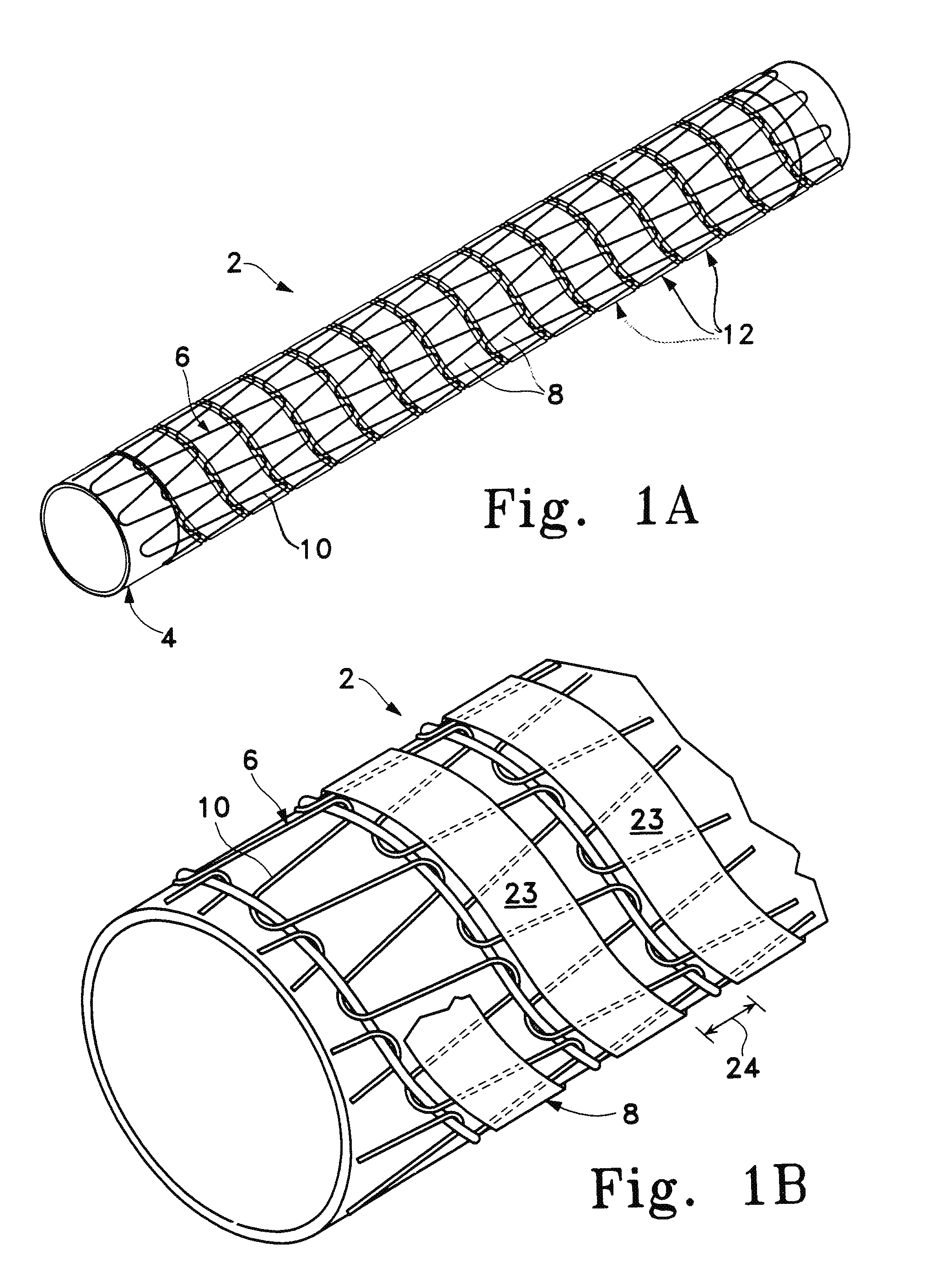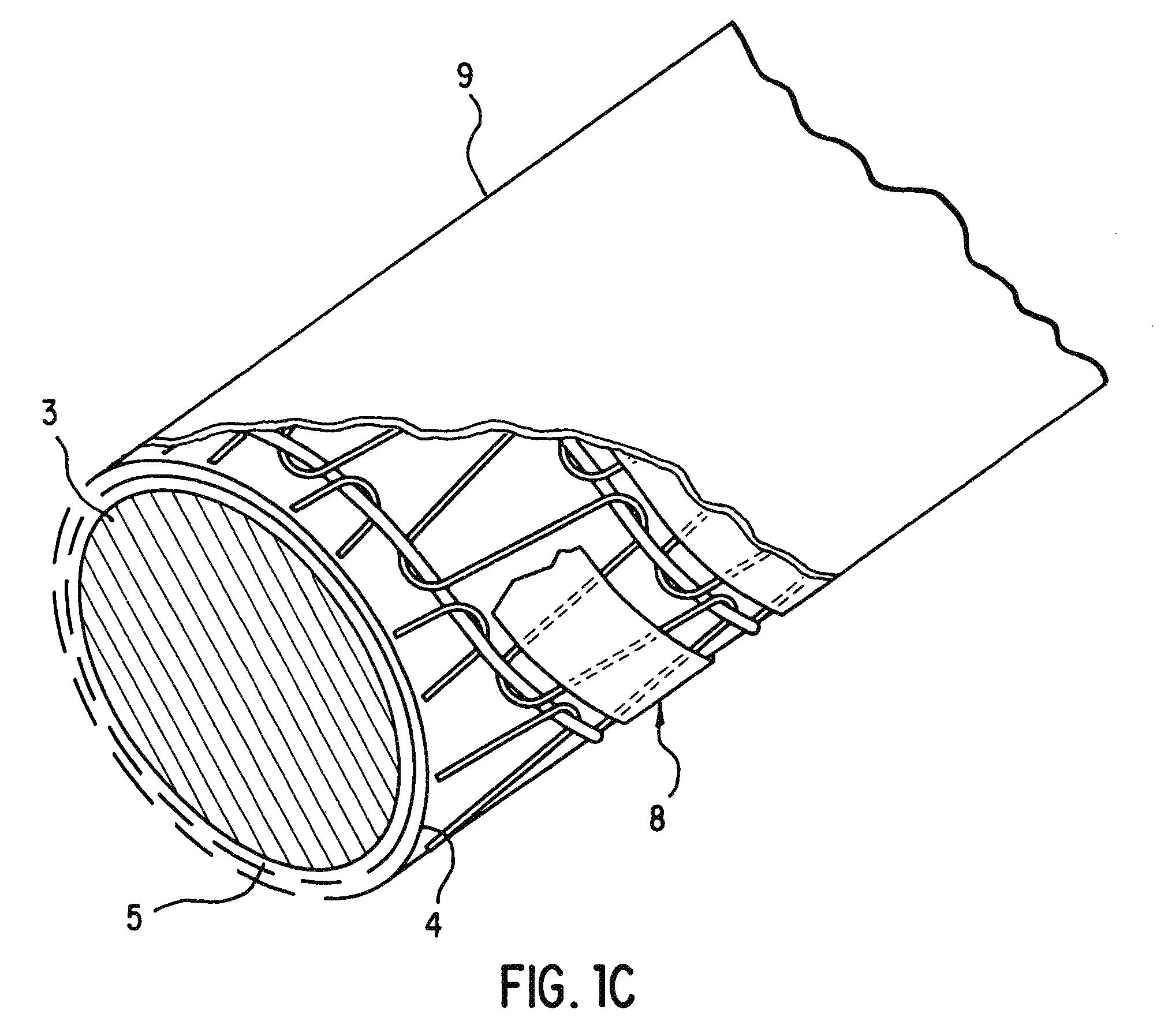Kink resistant stent-graft
- Summary
- Abstract
- Description
- Claims
- Application Information
AI Technical Summary
Benefits of technology
Problems solved by technology
Method used
Image
Examples
Embodiment Construction
[0051]Referring to the drawings in detail wherein like numbers indicate like elements, an expandable stent-graft 2 is shown constructed according to the principles of the present invention. Although particular stent and graft constructions will be described in conjunction with the preferred embodiments, it should be understood that other constructions may be used without departing from the scope of the invention.
[0052]Referring to FIGS. 1A and B, stent-graft 2 generally includes a thin-walled tube or graft member 4, a stent member 6 and a coupling member 8 for coupling the stent and graft members together. Preferably, the stent and graft members are coupled together so that they are generally coaxial.
[0053]Tubular expandable stent member 6 is generally cylindrical and comprises a helically arranged undulating member 10 having plurality of helical turns 12 and preferably comprising nitinol wire. The undulations preferably are aligned so that they are “in-phase” with each other as sho...
PUM
 Login to View More
Login to View More Abstract
Description
Claims
Application Information
 Login to View More
Login to View More - R&D
- Intellectual Property
- Life Sciences
- Materials
- Tech Scout
- Unparalleled Data Quality
- Higher Quality Content
- 60% Fewer Hallucinations
Browse by: Latest US Patents, China's latest patents, Technical Efficacy Thesaurus, Application Domain, Technology Topic, Popular Technical Reports.
© 2025 PatSnap. All rights reserved.Legal|Privacy policy|Modern Slavery Act Transparency Statement|Sitemap|About US| Contact US: help@patsnap.com



